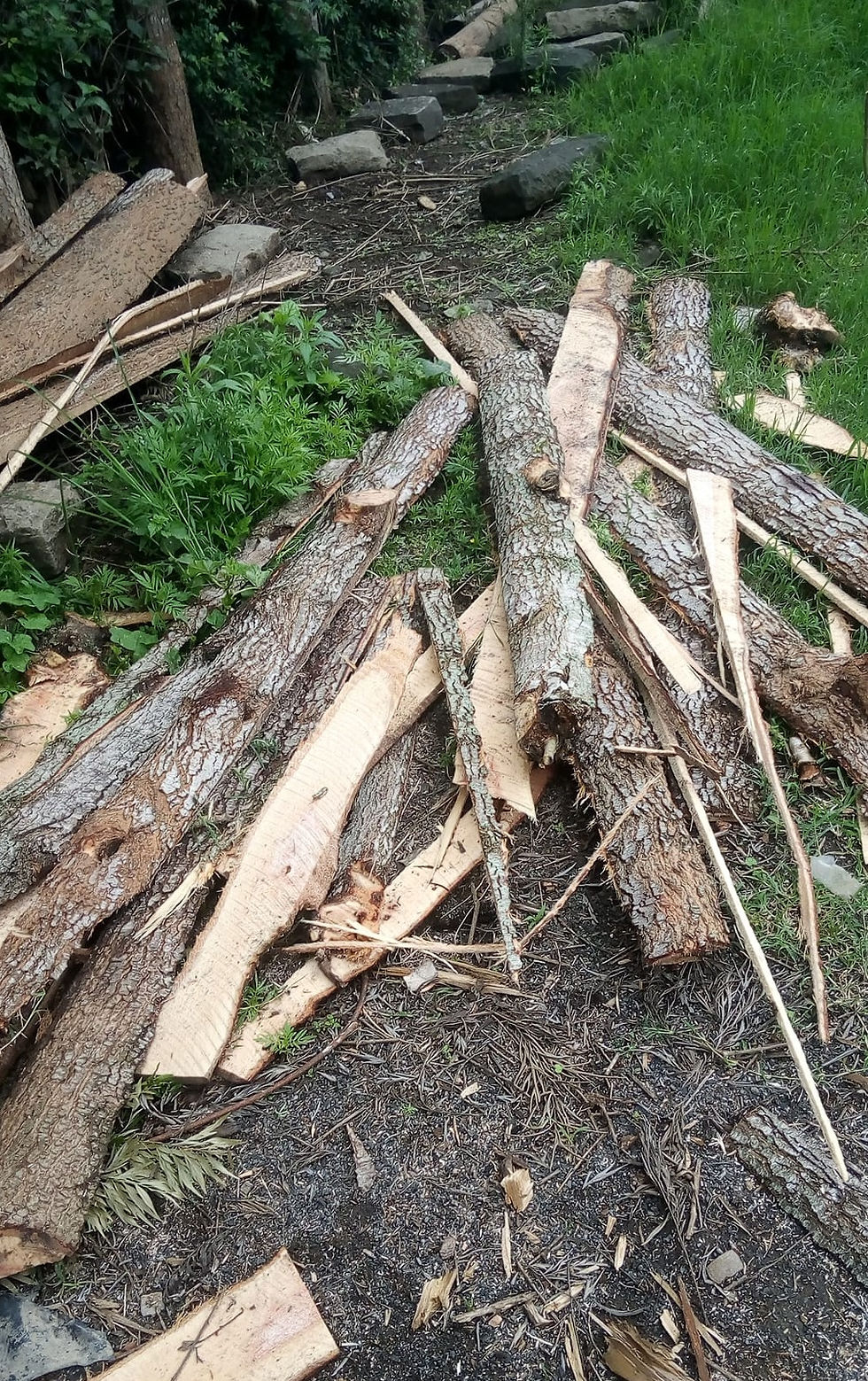
In this section we will look at
4.)How to grow Grevillea robusta
5.)Disadvantages of Grevillea robusta

The Grevillea tree (Grevillea robusta), also known as the silky oak is a fast-growing, evergreen tree native to Australia. It is valued for its versatility, providing timber, shade, and ornamental appeal, and has become a popular tree in tropical and subtropical regions worldwide.

Image of beds made with pure Grevillea Robusta Timber
The Grevillea tree can grow up to 30-40 meters in height under ideal conditions. It has a straight trunk, often covered with a light brown to dark gray rough bark. The leaves are fern-like, giving the tree a soft, feathery appearance. Its flowers are bright orange or yellow and are arranged in clusters, attracting bees and birds, making it a vital species for pollinators

Image of Grevillea robusta tree
In English it is referred to as Silky oak Tree while in Kamba as Mukima tree while in Kikuyu language as Mubariti Tree or Mukima Tree, Meru Language Mubariti Tree or Mukima Tree ,Embu language as Mubariti Tree. In Kisii language as Omokabiria Tree while Luhya language as Eshichuma Tree , Wakhuisi Tree .In Nandi language it is referred to as Kapkawet Tree or Chepkumyat Tree
Timber Production

Image of Grevillea robusta offcuts
Grevillea robusta produces a durable hardwood used in furniture, flooring, and carpentry. Its golden-brown wood is resistant to pests and decay.
Fuelwood
Its wood serves as an excellent source of firewood and charcoal.
Ornamental Use

Image of Grevillea robusta tree at Naromoru Aguthi
Its aesthetic foliage and flowers make it popular in landscaping and urban greening projects.
Tea and Coffee Plantations
Grevillea trees provide essential shade for crops and contribute to biodiversity on farms.
Timber and Construction

Its strong, termite-resistant wood is used in rural and urban construction.
Reforestation Programs
Due to its fast growth and adaptability, it is a preferred species for restoring degraded lands.
Shade and Windbreaks
In countries like Kenya, Grevillea is widely planted in tea and coffee plantations as a shade tree and windbreak.
Soil Improvement
It prevents soil erosion and enhances soil fertility through its dense root network.
Pollinator Habitat
The tree’s flowers are a vital nectar source for bees, birds, and other pollinators.

Image of Grevillea robusta flowers by Captain Green KE
In agroforestry, intercropping Grevillea robusta with crops like coffee or tea maximizes land use.
Growing Grevillea robusta (silky oak) involves specific steps to ensure optimal growth and development.

Image of Mubariti Tree Plantation by Captain Green KE
Avoid planting Grevillea robusta near structures or water lines, as its roots can spread extensively.
1.)Site Selection
Climate: Grevillea robusta thrives in tropical and subtropical climates, preferring temperatures between 15°C and 30°C. It can tolerate occasional frost but not prolonged freezing conditions.
Soil: Well-drained soils are essential. The tree adapts to sandy, loamy, or clay soils with a pH range of 5.5 to 7.5.
Sunlight: Plant in a location that receives full sunlight for at least 6-8 hours daily.
2. Propagation
Seeds: Propagation is commonly done using seeds. Follow these steps for seed preparation:
Collect seeds from mature pods.
Soak the seeds in hot water (not boiling) for 12-24 hours to break dormancy and improve germination rates.
Plant seeds in a germination tray filled with well-aerated soil or seed-starting mix.
Water lightly and maintain a temperature of around 25°C. Germination usually occurs within 2-3 weeks.
Cuttings: Propagation through cuttings is less common but can be used for clones of specific trees.
3. Planting

Image of Mubariti Tree Plantation by Captain Green KE
Timing: The best time to plant Grevillea robusta is during the rainy season or early spring to ensure ample water supply during establishment.
Spacing: Plant saplings or seedlings 3-4 meters apart in rows for agroforestry or ornamental use. For timber plantations, spacing may vary depending on intended use.
Hole Preparation: Dig a hole twice the width and depth of the seedling’s root ball. Mix some compost or organic matter with the excavated soil.
4. Watering
Initial Stage: Water regularly to keep the soil moist but not waterlogged, especially during the first 6 months after planting.
Established Trees: Once established, Grevillea robusta is drought-tolerant and requires minimal supplemental watering.
5. Fertilization
Add a balanced fertilizer (e.g., NPK 10-10-10) or compost during planting to boost initial growth.
Apply organic mulch around the base of the tree to conserve moisture and improve soil fertility.
6. Pruning
Prune young trees to shape them and remove weak or competing branches.
Regular pruning enhances airflow and light penetration, which promotes healthy growth.
7. Pest and Disease Management
Grevillea robusta is generally hardy but may face challenges like Aphids and Scale Insects which can be Treated with insecticidal soap or neem oil. Root Rot which can be prevented by ensuring proper drainage to prevent fungal infections.
Regular monitoring and timely intervention can help keep the tree healthy.
8. Harvesting (Timber)
Grevillea robusta is ready for timber harvesting in 15-20 years, depending on growth conditions. The wood is durable and used for furniture, flooring, and construction.
Invasive Potential
In some regions, Grevillea robusta has been classified as invasive, as its rapid growth can outcompete native species.
Allergic Reactions

The tree’s pollen and wood dust can cause allergic reactions in sensitive individuals.
Limited Lifespan
Though fast-growing, the tree is relatively short-lived, lasting 30-50 years in most conditions.

Comentarios